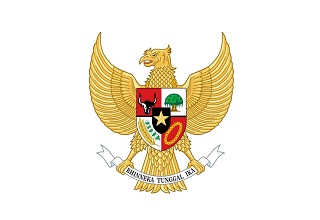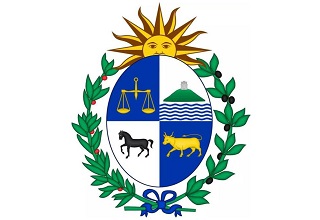Announcement on importing Nicaragua beef test quarantine requirements
1. Inspection and quarantine basis
(1) Laws and regulations and departmental regulations.
The "Food Safety Law of the People's Republic of China" and the implementation regulations, the "Activity Law of the People's Republic of China" and the implementation regulations, the "Inspection Law of the People's Republic of China" and the "State Council on Strengthening Foods, etc. The Special Regulations for Product Safety Supervision and Management "and the" Measures for the Safety Management of Import and Export Food Safety of the People's Republic of China "and" Regulations for Registration and Management Regulations of the People's Republic of China Imported Food Enterprises ".
(2) Bilateral protocols.
The Institute of Agricultural Protection and Health of the People's Republic of China and the Institute of Agricultural Protection and Health of the Republic of Nicaragua on the Institute of Inspection and Quarantine and Veterinary Health from Nicaragua from Nicaragua (hereinafter referred to as the "Protocol").
2. Allow imported products
Allowing imported Nicaragua beef refers to frozen edible bones and bone beef (bone muscles that have been slaughtered by beef, skeletal muscles after the internal organs, heads, and limbs (wrist and joints) and frozen edible beef products [ Frozen beef heart, frozen beef liver, frozen beef kidney, frozen beef cheeks, frozen beef heart tubes, frozen beef cannibal pipes, frozen beef tongue, frozen beef tendons, frozen non -refined beef cartilage, frozen beef tail, frozen beef Bone (excluding spinal bone)].
Mince, minced meat, meat grinder, lower corner, mechanical separation of meat is not allowed to lose China. It is necessary to remove the intestinal tract (from the duodenum to the rectum, including the end of the intestine), the thymus, the spleen, the tonsils, the skull include the brain, the eye, the trigeminal ganglia, the spinal cord and the spine include the back root gangster.
3. Production enterprise requirements
Loan beef companies (including slaughtering, segmentation, processing and storage enterprises) shall meet the requirements of China and Nicaragua on veterinary hygiene and public health regulations under the official supervision of Nicaragua.
The manufacturer of the beef beef shall be registered by the General Administration of Customs of the People's Republic of China (hereinafter referred to as China). The beef produced by the approved enterprises from the date of registration can be exported to China.
Fourth, inspection and quarantine requirements
(1) Animal epidemic management.
The Institute of Agricultural Protection and Health of the Republic of the Nicaragua (hereinafter referred to as Nigeria) confirmed that there are no cattle nodular skin diseases, beef infectious pleural pneumonia, small anti -scalp epidemic and cattle plague. Nicaragua is the risk of beef -sponge -shaped encephalopathy recognized by the World Animal Sanitation Organization and non -immune -free risks. In accordance with the requirements of the World Animal Health Organization, measures such as beef sponge -like encephalopathy and feed ban were implemented, and an effective traceability system was established.
(2) Live beef used to produce Chinese beef must be met.
1. Born, raised, and slaughtered in Nicaragua, has the only identity logo. Through the official effective traceability system, it can be traced back to the source farm of slaughter cows.
2. From 12 months before slaughter, no Brucelasia, Q fever, tuberculosis, vibrate tuberculosis, anthracnose, beef virus diarrhea/mucosal disease, beef germ coriander disease, beef infectious nasal tubeitis, beef leukemia disease There have been no clinical cases of beef paste diseases, dibabaiswormia and rotor murmical diseases in the past 24 months.
3. From 6 months before the slaughter, the diseased diseases stipulated by China, Nicaragua Animal Health Regulations and the World Animal Health Organization were restricted or monitored by quarantine.
4. Before slaughtering and transportation, there were no pupils and beef infectious plexus immune animals from Nagaragua who did not introduce countries outside Nicaragua within 12 months before the slaughter.
5. Before the slaughter, he had not been vaccinated for at least 14 days.
6. Never feed the anti -bone bone powder and oil residue.
7. In the process of being transported to the slaughterhouse and in the slaughterhouse, there was no contact: other types of animals; not in line with the requirements stipulated by the "Protocol"; the cows and other animals that the Chinese registered registered registered demand for production enterprises were not met.
(3) Requirements for processing process.
1. Live beef for the production of Chinese beef:
(1) Veterinary drugs and/or feed additives that have never been used by both parties have never been used.
(2) Slugs, segmentation, processing and storage registered in China.
(3) It is derived from the farm that meets the "Protocol".
(4) In accordance with the relevant laws and regulations of China and Nicaragua, the beef used for the production of Chinese beef was slaughtered and checked, and the results were qualified. It proves that all slaughter cows are healthy, without any clinical symptoms of infectious diseases and parasitic diseases, no pathological changes in carcass and organs, and the main lymph and glandular tissue on the carcass have been removed.
(5) The intestinal tract of all ages (from duodenum to rectal, including the end of the intestine), thymus, spleen, tonsils, skulls include brain, eye, trigeminal nerve festival, spinal cord, spine including back root ganglia and other tissues are in During the process of production and processing, it was effectively removed by safe and hygienic ways, and it was not polluted to lose Chinese beef.
(6) The slaughtering cow is not used to use the method of stamping air or gas in the cerebral cavity, or the spinal cord stabbing method.
2. The implementation of the Nicaragua National Residual Monitoring Program proves that the residues/limit of veterinary drugs, pesticides, heavy metals, persistent organic pollutants and other toxic and harmful substances do not exceed the highest limit stipulated in China, Nicaragua laws and regulations and international standards.
3. The product is not polluted by pathogenic microorganisms, and meets the requirements stipulated in the laws of China and Nicaragua.
4. During the epidemic of major public health epidemics, enterprises formulated necessary meat safety prevention and control measures in accordance with international regulations and standards to ensure that the entire process of meat receiving, processing, packaging, storage, and transportation was not polluted by raw materials.
5. Products are hygienic and safe, suitable for human consumption.
(4) Storage requirements.
In the freezing or cold storage of beef, there should be a dedicated area for saving Chinese beef and obvious signs.
5. Certificate requirements
Each container's beef should be attached to at least one original veterinarian health certificate, proving that the products are in line with the relevant provisions of China and Nicaragua veterinary medicine and public health laws and regulations and the statement.
The veterinary health certificate is written in Chinese, Spanish, and English (when filling in the content of the certificate, the English must be filled in English). The format and content of the veterinary health certificate must be recognized by both parties in advance.
Nigeria should provide information such as inspection and quarantine seal printing, veterinarian health certificate samples, authorized visa veterinarian lists and corresponding signature samples, anti -counterfeiting logo instructions, and email names for the sending email of certificates to the Chinese side (if applicable). If the electronic information of the sending certificate shall be sent to the Chinese customs through the Chinese customs within 48 hours after the certificate is issued. If there are changes and changes, it should be notified to the Chinese side at least one month in advance.
Niger should send electronic information to China in a timely manner through official channels, so that China can verify that the Chinese side should ensure that the electronic information should be accurate and secure when importing.
6. Packaging, storage, transportation and identification requirements
Loan beef should be packaged in food contact materials that meet the national standards of Chinese food safety and Nicaragua standards. Loan beef should have a separate internal packaging, Chinese and English in the packaging, or the registered number of Chinese and Spanish text indicators, the country of origin, and the production enterprise, and the production batch number. The outer packaging should be named Chinese and English, or Chinese and Spanish texts, registered nations, production enterprise registration numbers, production batch numbers, specifications, origin (specific to the state/provincial/city), destination (destination should be marked as China People's Republic of China), production date (annual/month/day), quality limit, storage temperature, etc., add (paste or print) official inspection and quarantine logo. Pre -packaged meat products should also meet China's requirements and standards and standards on pre -packaged food labels.
The process of losing beef from packaging and storage to transportation should meet the relevant hygiene requirements of China and Nicaragua to prevent pollution from pathogenic microorganisms or toxic and harmful substances. The storage and transportation of beef should be performed under the corresponding temperature conditions, and the center temperature of frozen beef should not be higher than -15 ° C.
After the cargo is loaded into the container, a seal is imposed under the supervision of the official veterinarian of Nicaragua, and the seal must be indicated in the veterinary health certificate. The transportation process must not be disassembled and replaced.
Special announcement.
GACC
September 1, 2023




